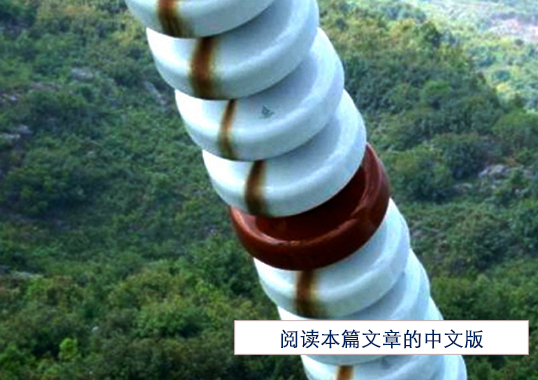Suspension insulators play an important role in protecting overhead transmission lines, and are essential components in maintaining the integrity and reliability of power transmission and distribution networks. They function to isolate the conductors from ground, preventing electrical surges and other types of power disturbances that could cause harm to the power grid. In this article, we will discuss the suspension insulator and its significance in modern power systems.

What is a Suspension Insulator?
A suspension insulator is a type of electrical insulating component typically used to support and insulate high voltage transmission lines. The insulator is suspended from a tower or pole and supports the transmission line as it crosses over uneven terrain. These types of insulators are used in medium to high voltage transmission lines to maintain the proper distance between conductors and prevent electrical leakage.
Suspension insulators come in two types: porcelain and composite. Porcelain suspension insulators are widely used in power transmission networks, especially in high voltage applications, due to their good electrical and mechanical properties. Composite suspension insulators, on the other hand, are new age insulators made of a synthetic material with high strength and low weight. These insulators have better resistance to extreme weather conditions and are gradually replacing porcelain ones.
The Basics of a Suspension Insulator String
A suspension insulator string is a combination of several insulators connected in series, and it ensures that a high voltage conductor is properly insulated from its supporting tower. The string is made up of either porcelain or composite insulators, depending on the specifications and design requirements of the transmission line.
A typical suspension insulator string will have a few components, including the insulator, a metal fitting called end hardware, conductor fittings, and mounting hardware. The end hardware attaches the string to the supporting tower or pole, and the conductor fittings connect the string to the transmission line. The mounting hardware is used to secure the insulator string assembly to the tower or pole.
Advantages of Suspension Insulators
The use of suspension insulators has several advantages in power transmission and distribution systems. Some of these advantages include:
- High dielectric strength - Porcelain insulators are known for their high voltage withstanding capacity, making them ideal for use in high voltage transmission lines.
- High mechanical strength - The insulator's ability to withstand mechanical loads such as wind, vibration and surges is essential to prevent collapses of transmission lines.
- Low weight - Composite suspension insulators are lightweight compared to porcelain insulators, making them easy to transport and handle.
- Low maintenance -Suspension insulators require minimal maintenance, which results in reduced operating costs.
Conclusion
As we have seen, suspension insulators play a crucial role in protecting overhead transmission lines from electrical surges and other types of power disturbances. These insulators are essential in maintaining the reliability and safety of power transmission and distribution networks. Whether porcelain or composite, it is critical to choose high-quality insulator components that meet the specifications and requirements of the transmission line.
Suspension insulators are indispensable components in modern power systems, and their use has increased over the years. As power grids continue to expand, it is expected that the demand for suspension insulators will continue to rise. Now that we've discussed the basics of suspension insulators, it is important to remember that proper installation and maintenance practices are critical to ensuring reliable and efficient network operation.